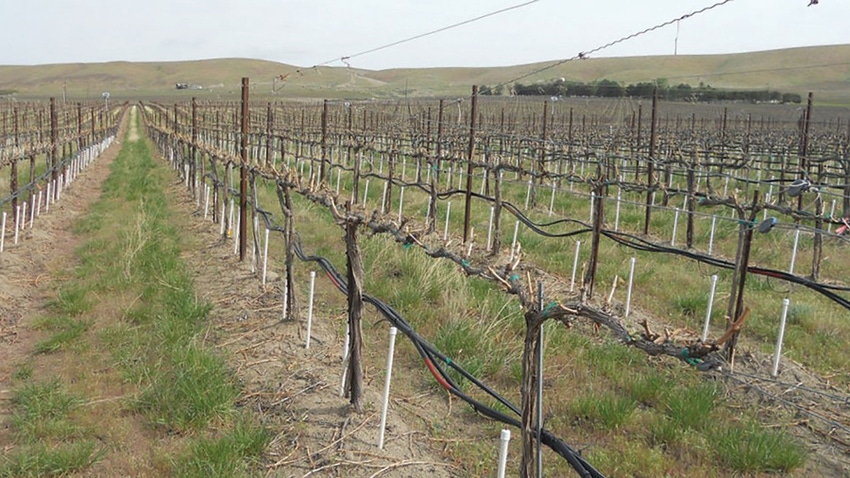
There are four commonly accepted types of irrigation — flood, overhead, drip, and subsurface --- but in Pete Jacoby’s book of preferred methods, subsurface, direct root-zone application is the best way to go.
The Washington State University plant ecologist has spent the last decade conceptualizing, developing, perfecting, and proving the efficacy of the pipe-in-the-ground system.
“I like sub-surface because of its ability to conserve water,” he said. “Depending on the types of plants you’re growing, you can maximize that production with less water. We estimate a reduction ranging from 25% to 35% while still maintaining yield. We also saw an increase in the quality of grapes, particularly in red grapes, in the form of more sugar content and a movement toward neutralization on the pH scale.”
As an added benefit, he said the technology helps limit canopy growth and reduces weeds that grow under the vine row.
In a recent WAVEx webinar on the topic of Improving Vineyard Water Productivity (and a follow-up conversation with Western Farm Press), Jacoby, who has been investigating the DRZ (direct root zone) sub-surface micro-irrigation application since 2013, said: “We began with just four growers, innovative, early adaptors willing to experiment despite the fact that initial efforts with buried line drip irrigation had exposed problems of clogging or being chewed on by burrowing rodents. The year we began our initial plantings was the hottest and driest year on record.”
Sinking a vertical supply pipe one, two, and three feet about a foot and a half out from both sides of the vine trunk, the researchers experimented with using 60% of the water allocated to surface drip, then cut back to 30% and even 15%. We found, in general, despite stressing the plant, we could reduce the amount of water by a quarter to a third and still maintain yield.”
Device improved
In the intervening years, additional experimentation has improved the supply device to prevent root intrusion and current day research involves automation and the use of sensors. So why hasn’t this system become more of a popular option among grape growers?
“First of all, the cost,” he replied. “Determining how quickly and by how much we can recoup those costs via water savings. We’re currently finishing up research on whether or not subsurface irrigation might be able to maintain more fertility by reducing water down deeper. We’re also experimenting to see if the perceived benefits to red grapes also applies to white grapes.”
Other exploratory studies center around the concept that the roots of vines are actually changing their architecture. “With drip irrigation at two feet, the roots follow the water. In fact, we followed that same concept to five feet deep and found the intrinsic value of putting irrigation sub-surface is that it can sort of increase the resilience of wine grapes to drought as part of a warming climate.”
As a soil scientist at Washington State University, Jacoby gets to experiment in the Columbia Basis, one of three areas in the U.S. that is capable of producing over 300 different crops. His focus is on wine grapes whose acreage increases about 9% annually --- in second place only to California in its recognition as a producer of high-quality premium wines. The limiting factor which could threaten continued growth of this industry is water.
Said Jacoby: “Subsurface might be a key to that growth, particularly the direct root zone method via plastic pipe where you put the system in the same hole you put your vines at planting. Because the vines know they’re going to get water, the roots immediately start to develop and you get drought relief much faster.”
About the Author(s)
You May Also Like




